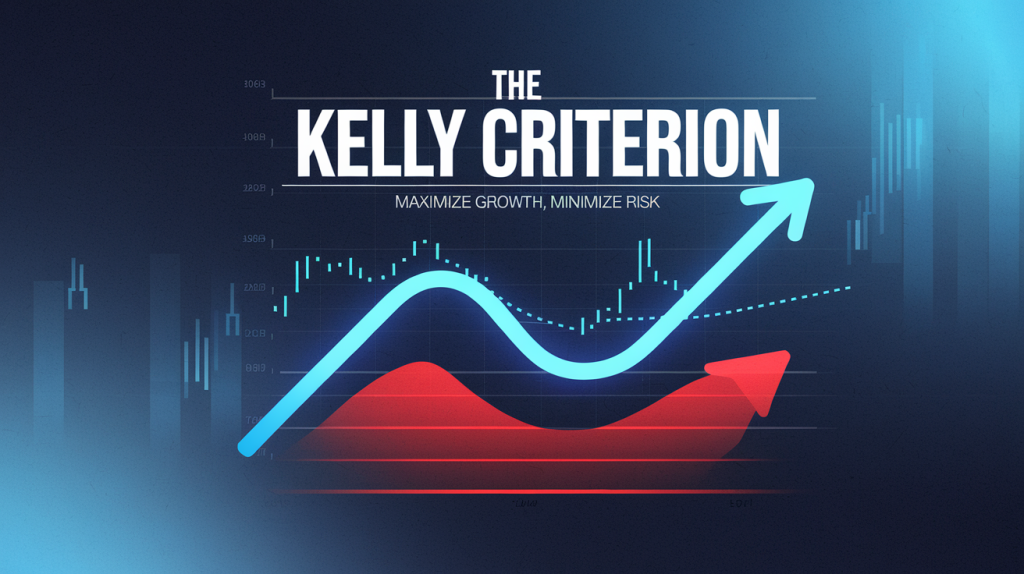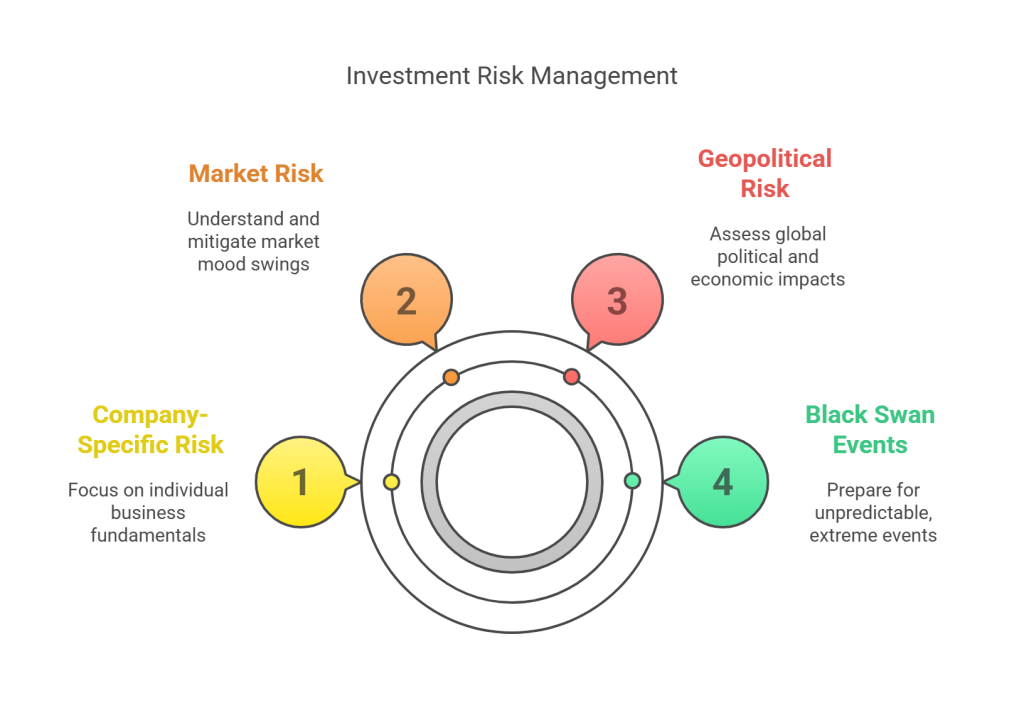
I have often expressed my opinion that in investing, buying is the most important transaction in a stock ownership lifecycle.
You’ve done the research. The stock is undervalued, the margin of safety is wide, and the upside looks incredible and you know you are paying a great price. But how much should you allocate? Too little, and your winners won’t move the needle. Too much, and you could blow up your portfolio if you’re wrong. This is where most investors unknowingly sabotage their long-term returns. But there’s a way to solve this—mathematically and rationally. It’s called the Kelly Criterion, and it may be the most important tool you’re not using yet.
What Is the Kelly Criterion—and Why Should You Care?
You may have heard of it in the context of gambling, but serious investors know better. The Kelly Criterion isn’t a betting strategy—it’s a capital allocation framework that maximizes portfolio growth over time while minimizing the risk of ruin.
I was introduced to this by the fantastic William Poundstone book “Fortune’s Formula: The Untold Story of the Scientific Betting System That Beat the Casinos and Wall Street“. I worked tirelessly to adapt this formula to a multi-stock portfolio that accounts for inter-stock correlations. This discovery completely transformed my investing.
Instead of sizing positions based on conviction or gut feel, Kelly gives you a mathematically sound answer based on your estimated edge and the volatility of the investment. It tells you how much of your capital to allocate to any given idea to maximize geometric growth. In other words, it helps you grow consistently while avoiding the cliff.
The Formula That Optimizes for Long-Term Growth
At its core, the Kelly Criterion balances three factors. First, it incorporates your estimated edge—your expected return. Second, it factors in your probability of being right, which is essentially your confidence in your fair value estimate. Third, it accounts for the volatility of the asset, usually measured as standard deviation.
This formula isn’t about trying to hit home runs. It’s about building wealth with discipline, while making sure you avoid ruin. Once your capital base is damaged, compounding becomes much harder. Kelly keeps you in the game and lets time do the heavy lifting.
Why Most Investors Get Position Sizing Wrong
Let’s be honest: most position sizing comes from the gut. You feel strongly about a stock, so you go big. You’re unsure, so you put in a tiny amount. Or worse, you use a cookie-cutter rule like “5% per position” regardless of the stock’s actual return or risk profile.
These approaches are portfolio poison. Kelly shows us that the same stock might deserve a 2% allocation in one portfolio and a 15% allocation in another, depending on your expected return and the rest of your holdings.
Investment pros will tell you to back your conviction, or perhaps do not risk more than 1% on any one stock. There are countless such rules. Very few will explain to you what “backing your conviction” really means in practice.
How to Estimate Kelly Weights Without Getting a Math Degree
You don’t need to be a quant to apply this. Start by estimating fair value using your normal intrinsic value process. Then, calculate the expected return by taking the difference between fair value and current price, and dividing it by the current price.
Next, assess the volatility of the stock. This can be based on historical price movements or what you know about the sector. After that, consider your confidence in your estimates. Be conservative. If you’re only 60% confident, scale your position accordingly.
The simplified Kelly formula for position sizing is:
Kelly fraction (f) = Edge/Odds = (bp – q) / b
Where:
- b is the odds received (expected return per dollar risked),
- p is the probability of a successful outcome (your confidence),
- q is the probability of a loss (1 – p).
In investing terms, you can adapt this as:
Kelly weight = Expected Return / Variance of Return
Then adjust the result to reflect your confidence in your assumptions and apply a fractional Kelly size. Using the full Kelly number can be aggressive, so it’s often safer to go with half-Kelly or even quarter-Kelly. This keeps your drawdowns manageable and lets you stay invested with peace of mind.
Case Study: Avoiding a Blowup (And Capturing the Upside)
Let’s say you find a stock trading at $10 with a fair value of $20. That’s a 100% upside. But it’s a volatile micro-cap, and you estimate a standard deviation of 40%. Based on your confidence and calculations, you might end up with a half-Kelly allocation of 7%.
Now compare that to another stock with a 30% upside but low volatility and high confidence. Your half-Kelly weight might come out to 9%.
Kelly tells you what your gut won’t: the calmer, smaller-upside stock may deserve a larger piece of your portfolio than the more exciting but volatile one. That’s how you avoid overbetting and undercompounding.
Building a Growth-Optimal Portfolio with Kelly
Now imagine doing this across 10 to 15 stocks in a portfolio. The single Kelly bet is now adapted to a multi asset portfolio. Each position is allocated based on its standalone expected return, its volatility, and its correlation with every other holding.
The result is a growth-optimal, risk-balanced portfolio that maximizes long-term compounding. As stocks move or new data comes in, you update your estimates and rebalance. This isn’t buy-and-hold. This is intelligent, adaptive portfolio management.
At Astute Investor’s Calculus, we set a monthly recalculate and rebalance schedule. Often times we exit a position that has gone up even before it reaches the intrinsic value, and that happens primarily because there is a better opportunity in another portfolio stock. The process makes this easy to do without the second guessing that a regular gut felt decision involves.
Kelly Protects You From Yourself
When markets rise, we get greedy. When they fall, we get scared. Kelly strips away the emotion and gives you a disciplined framework to follow. It ensures you never go all-in on a whim or ignore a good opportunity because you’re spooked.
It also helps you sell. When a stock appreciates and the expected return drops, Kelly tells you to reduce your allocation. That way, you’re not stuck holding a stock with low upside just because it’s gone up.
The Quiet Weapon of the World’s Best Investors
Ed Thorp made millions using Kelly in blackjack, got kicked out of Vegas—and then used it in the markets. Buffett concentrates where the edge is biggest and trims as return potential wanes. Bill Gross sized trades based on edge and volatility, not intuition.
Remember just a few months ago when Buffett was selling stocks to raise cash and no one could figure out why! Yep it was Kelly!
Kelly is the silent math behind many of the best track records in investing.
Final Thoughts: It’s Not About Perfection. It’s About Process.
You won’t always nail your estimates. But that’s not the point. The Kelly Criterion forces you to think in terms of probability and risk. It protects your capital, guides your allocation, and helps you walk away when the odds change.
And if you’re looking for a place where every recommendation comes with this kind of rational discipline, the Premium Membership is designed for you. Each position is weighted based on expected return and risk, so you’re never left guessing how much to allocate. That’s the difference between hoping for compounding and engineering it.

Shailesh Kumar, MBA is the founder of Astute Investor’s Calculus, where he shares high-conviction small-cap value ideas, stock reports, and investing strategies.
His work has been featured in the New York Times and profiled on Wikipedia. He previously ran Value Stock Guide, one of the earliest value investing platforms online.
Subscribe to the Inner Circle to access premium stock reports and strategy insights.
Featured in:








Mr. Kumar
I have read your content and find it very practical versus hype , I am looking for a mentor to teach me investing, I sold my Mechanical Company 3 years ago after 25 years of commitment and much sacrifice it did pay off. I am not a big shot by no means I’m just a little shot that keeps on shooting. I have had different offers with financial advisors and I am very reluctant due to the fact there is no magic wand in addition to no one cares about your money as much as you do. The fact is I need something to do I like learning I want to know more about industry group sectors technical and fundamental analysis I wanna know why one stock moves in a sector and the other one doesn’t want to know more about industry group sectors technical and fundamental analysis I want to know why one stock moves in a sector and the other one doesn’t . After Contracting for 25 years I learned numbers don’t lie but people do and emotions will deceive and distract from sticking to strategy. I want to be a good steward to the blessings I’ve been given.
Thank you
Bart
Hello Bart,
Let me know how I can help. You can always contact me from the Contact page. I also have several plans available for investors who like to follow my investments (Monthly, Annual, and Lifetime). If that is of interest I can point you in the right direction. If you would like to read more educational material, this website is generally free or very low cost depending on how much you want to read.
Regards,
Shailesh Kumar